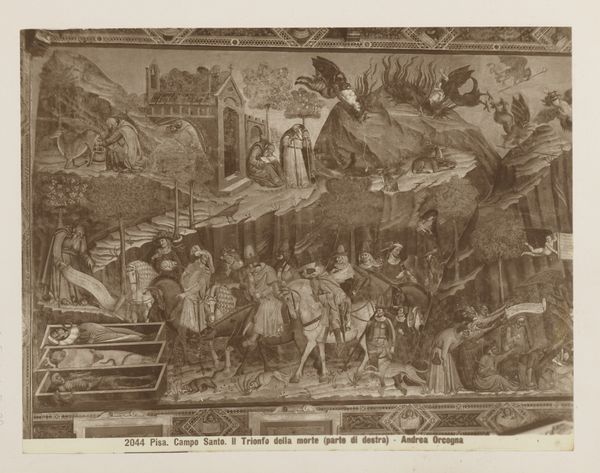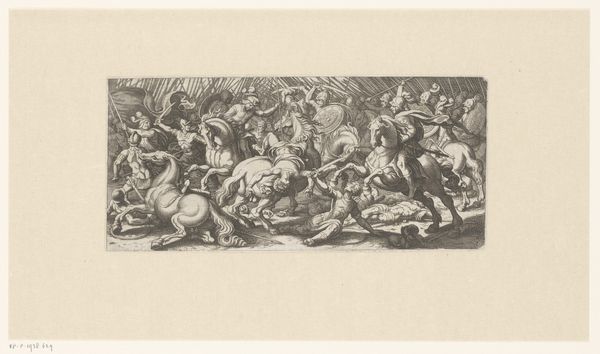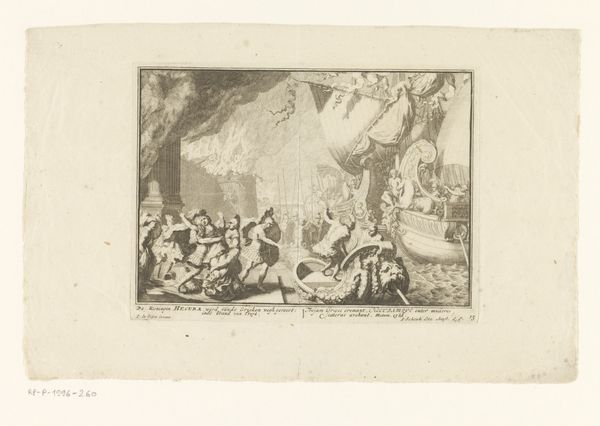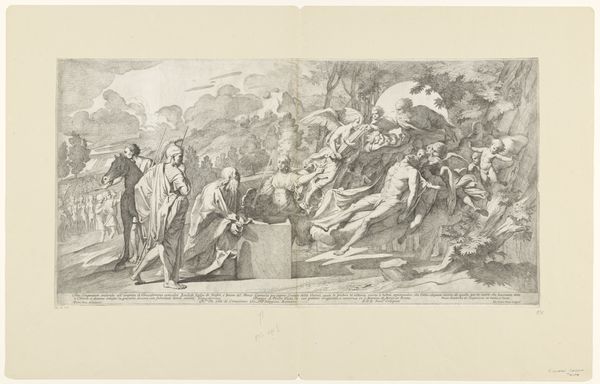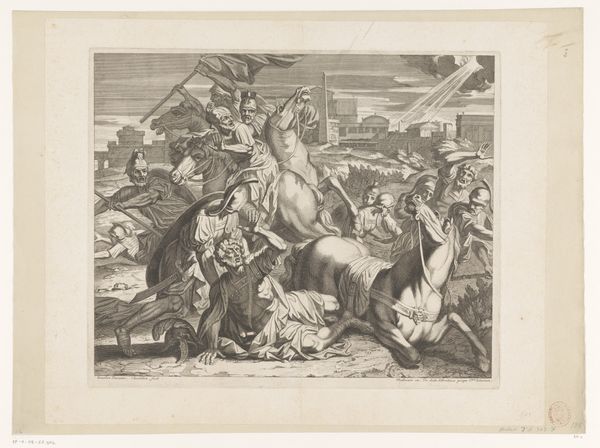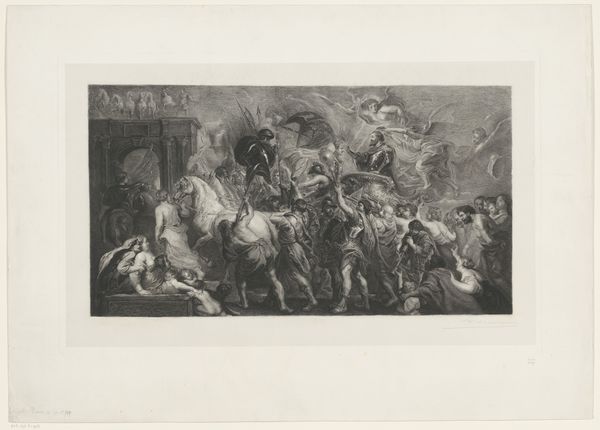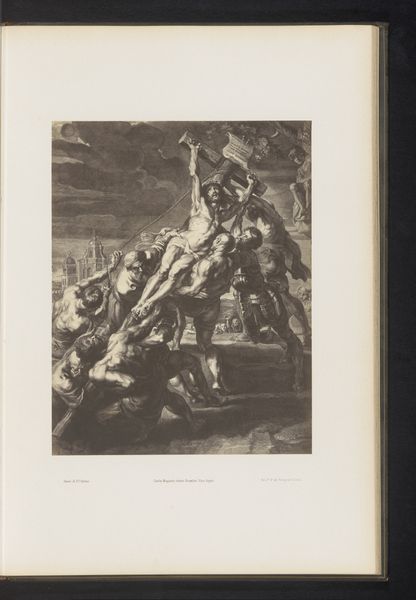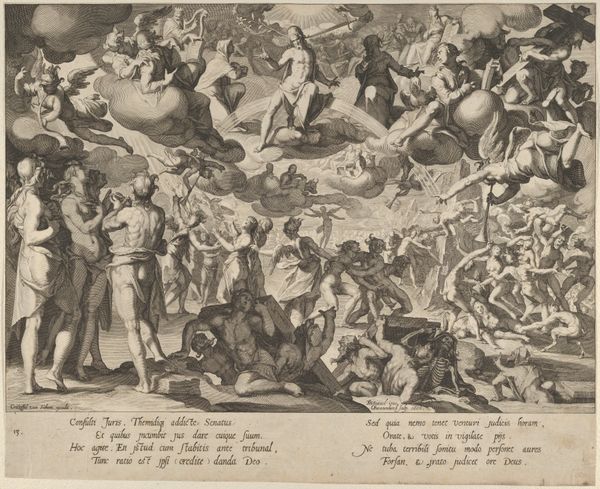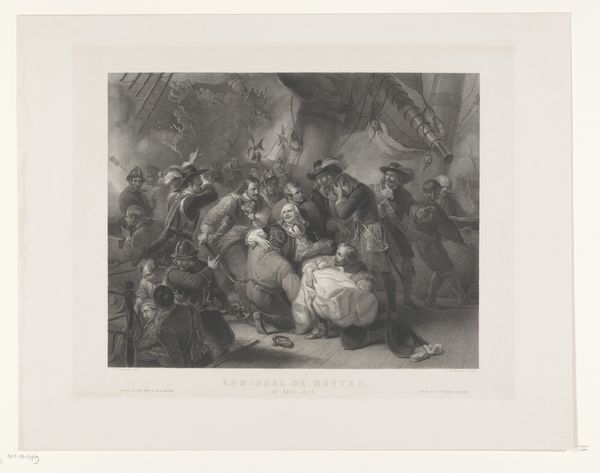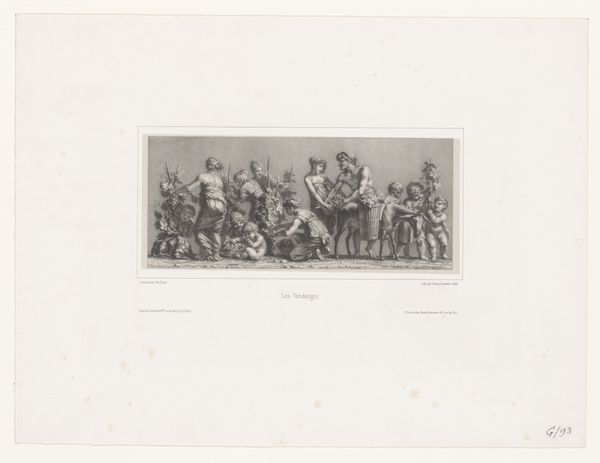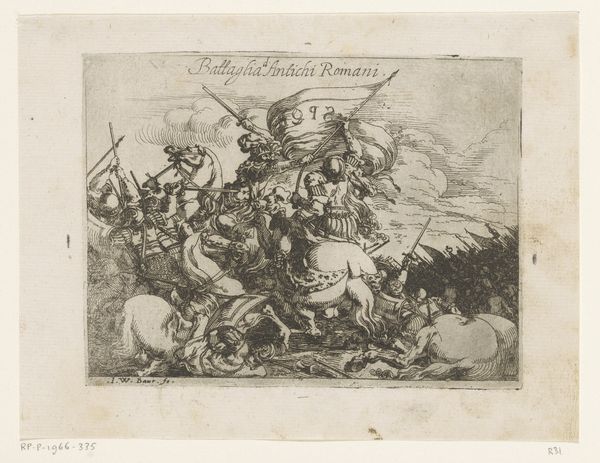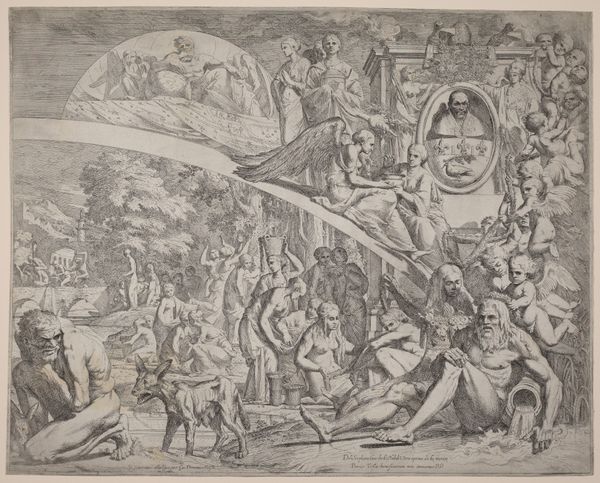
print, engraving
#
allegory
#
baroque
# print
#
landscape
#
figuration
#
form
#
line
#
history-painting
#
engraving
Dimensions: height 392 mm, width 638 mm
Copyright: Rijks Museum: Open Domain
Balthazar Moncornet made this print, Nederlaag van Maxentius, sometime in the 17th century. Prints like this one were often produced using a method called etching, where a metal plate, usually copper or zinc, is coated with a waxy, acid-resistant material. The artist scratches an image into this coating, then immerses the plate in acid. This eats into the exposed metal, creating lines that will hold ink. The method allowed for relatively quick reproduction, and could be produced at scale. The image depicts a frenzied battle scene of warring factions fighting for control of a bridge. This print doesn't shy away from illustrating the chaos and physical demands of war. The work involved in the production process, making multiple prints from the etching, becomes a kind of metaphor for the labor involved for those engaged in battle. So, considering materials, making, and context helps us recognize that this print is not just a historical depiction, but also a reflection on the means of production and consumption of historical narratives.
Comments
No comments
Be the first to comment and join the conversation on the ultimate creative platform.
